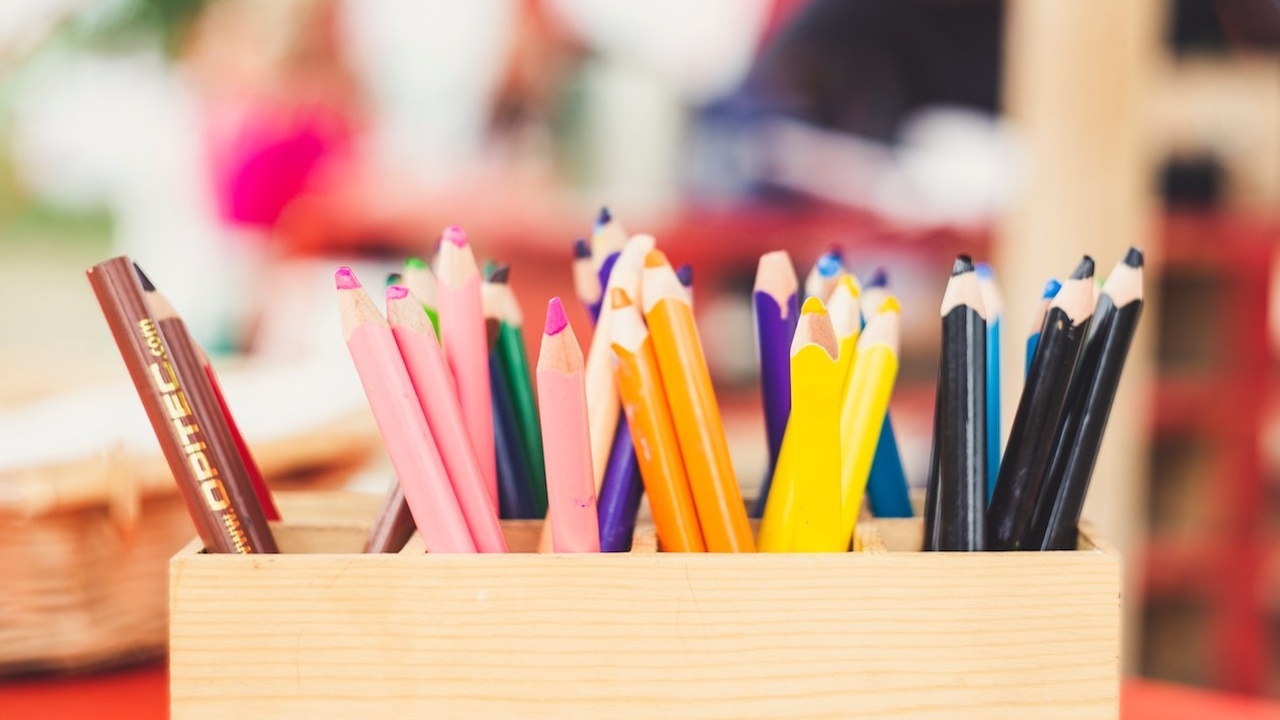How to Organize Your Children’s Art and Schoolwork
Jun 01, 2021
It’s remarkable how children’s stuff can accumulate! In particular, I find that kids’ art and schoolwork can really take over my home. I remember times when my son was in preschool and he would come home with five paintings in one day—some of which only have one brush stroke—and they were all important to him. I would then struggle to find the balance between honoring my son’s work and keeping our home as simplified and clutter-free as possible.
Below is the process I use to organize my children’s art and schoolwork in four easy steps. Also included are some additional tips for creative ways to display and save your children’s work:
1. Display. I have a very large corkboard in a playroom where I tack up my children’s artwork. Not only does it really add to the room, but they enjoy seeing their art and I hope to know that we respect their work. But it doesn’t have to be a cork board–any designated place will do such as the classic refrigerator door! Once I have run out of space, I take the work down and move on to the next step. Occasionally, I display school work on the board as well, other times I just take time to look at it with my child and make observations or ask questions and then go on to step two.
2. Photograph work. Sometimes I take a picture of the whole corkboard and other times I photograph individual pieces. I also photograph some of the school work. I keep some originals and recycle the rest. Photographing the work saves so much storage space, but still feels like we are cherishing their work. The other benefit to photographing everything is that someday I know I will let go of the pieces I choose to keep and that will be easier to do because I know I have a photograph of them. There are also many things you can do with the photographed work. See tips below.
3. Label and store. I write the name of my child and date on the back of any artwork or schoolwork I choose to keep. I have a labeled plastic container with a lid for each school year. I usually keep most or all of the school work and store it in the container. I have a large portfolio case for any oversized artwork that does not fit in the plastic container. Anticipating the years ahead my plastic container is about shoe boxed size- a little bigger than 8/12 x 11 sheets of paper. The photos of the work are “labeled” and stored on my computer. I download the photos using iPhoto, title a folder with the name and school year, and keep adding to the folder.
4. Scan it. Go paperless by scanning your children’s homework. Then organize it in folders on your desktop organized by school year, teacher, subject, etc…
Tips for Displaying and Organizing Your Children’s Artwork
Tip 1: When my son graduated from preschool I made him a MAC photo book of all his preschool art, which he really appreciated. The photographed artwork also makes great thank you and greeting cards or invitations and can also be interspersed in family photo albums.
Tip 2: Kids' artwork looks great framed! No need to buy art to decorate your child’s room or a playroom. You will be surprised how great it looks once matted or framed. I also find that my older son’s drawings look great without a frame when grouped—just use a little invisible tape to keep it on the wall.
Tip 3: During the holidays the artwork makes a nice gift. Sometimes it’s hard after a busy school week to get my son to sit down and do fresh drawings for all the relatives–so we can go back to some that I saved and he can choose which ones to give. Similarly, a younger child’s artwork or painting looks great folded into a card. Also, consider cutting the artwork into smaller pieces and uses a hole-punch to make a gift tag for birthday or holiday gifts.
Tip 4: Another option for school work is to have it spiral bound. You can make a simple cover sheet with colored paper and label it with the school year and then have it spiral bound somewhere like Kinkos. Children really enjoy reviewing their schoolwork and a nice neat book is easier to look at than rummaging through loose papers in the plastic container.
Tip 5: Create a large poster that consists of many small images of your children’s work. I recently saw someone take images of their children’s artwork, shrink them down to 2″ x 3″ and then arrange them together on a large poster board. I imagine it’s a time-consuming project, but the end result is really interesting and the kids are so happy to see so many of their artworks represented.
Stay connected with news and updates!
Join our mailing list to receive the latest news and updates from our team.
Don't worry, your information will not be shared.
We hate SPAM. We will never sell your information, for any reason.

